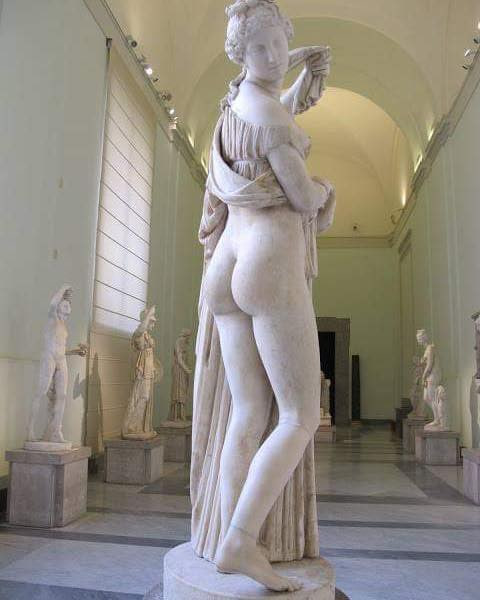In the hushed galleries of sculpture, Jean-Baptiste Auguste Clésinger's "Woman Bitten by a Serpent" (1847) evokes a stir of both admiration and controversy. Exhibited in the romantic backdrop of 19th-century France, the marble sculpture captured a moment of fatal allure, intertwining death and sensuality in a tableau of chilling beauty.
The sculpture presents a life-size depiction of a woman in the throes of death, her body contorted in a mix of agony and ecstasy as a serpent's venom courses through her veins. Clésinger's work is celebrated for its hyper-realistic portrayal, which was achieved through the novel technique of taking a plaster cast from a live model, a method that was as innovative as it was contentious at the time.

Each detail of the piece, from the woman's flowing hair to the tension in her muscles, the delicate interplay of her fingers, and the softness of her skin, is rendered with excruciating precision. The sculpture's surface captures light and shadow in a way that animates the figure, breathing life into the marble. The result is an astonishingly lifelike representation that transcends the cold, hard medium.

Clésinger's masterful work transcends mere representation of a mythic scene; it delves into the realm of human emotion, capturing the duality of pleasure and pain, life and mortality. The subject's expression is one of paradoxes—caught between a serene acceptance and a painful struggle against the inevitable, embodying the Romantic era's fascination with the macabre and the transcendental.

The sculpture became a sensation at the Salon of 1847, inciting a whirlwind of reactions. Critics and the public alike were captivated by the eroticism of the figure, which challenged the era's moral and artistic codes. The sculpture was seen as a bold statement, breaking away from classical traditions of idealized forms to embrace a raw and poignant realism.

Today, "Woman Bitten by a Serpent" holds a place of honor as a pivotal piece that pushed the boundaries of artistry and propriety. It is a testament to Clésinger's bold vision and exceptional skill, marking a significant moment in the history of sculpture where art became a mirror to the complexities of human existence. The sculpture is not just a representation of a woman's final moments but a dialogue on the nature of art itself, one that invites reflection on the interplay of life, art, and the eternal allure of beauty in its most tragic form.










